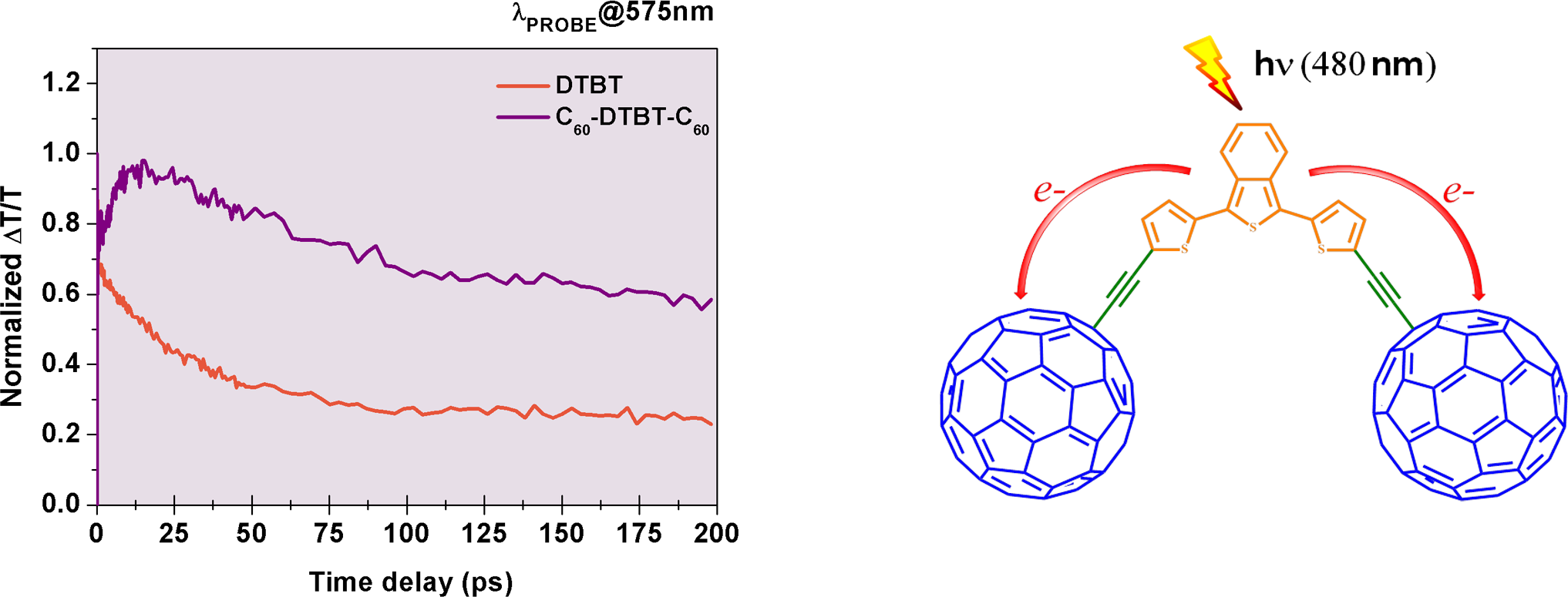Ambra Guarnaccio: Ph.D. student and research fellow of CLaN Project.
As part of CLaN Project (co-financed by the Operational Programme ERDF Basilicata 2007-2013) it was developed the following PhD project for the Doctoral School in “Chemical Sciences” at the University of Basilicata whose scientific work outputs have been reported in the following abstract .
“Oligothiophenes Synthesis and High-Resolution Spectroscopic Characterizations”
Abstract
Objectives of the present work have been, first of all, the synthesis of a new organic pi-conjugated donor-acceptor system (1) potentially useful for photovoltaic applications and then its photophysical characterization both with steady-state and time-resolved spectroscopic techniques.
The synthetic pathway adopted is composed of seven consecutive steps starting from a commercially available and low cost ortho-phthalaldehyde (3) and passing through an oligothienylic intermediate (2). The followed synthetic approach has allowed us to obtain a donor-acceptor target compound with a total yield around 26% after the first six reaction steps that drops to about 5% after the last critical reaction for fullerene coupling. The complete synthetic strategy of our new compound (1) has been published.[1] The chemical synthesis has been completely developed at the University of Basilicata.

Time-resolved measurements (Pump-Probe Spectroscopy) have been provided in order to study the electronic structure of the donor-acceptor system. The relative associated relaxation times and constant rates have been evaluated thanks to the kinetic analysis obtained from the experimental data. In the same time, a proof of an intramolecular electron transfer process, fundamental for solar energy conversion into electrical energy in photovoltaic devices, has been detected.

All time-resolved measurements have been performed at ARPA-COLA Lab belonging at the Institute of Electronic Structure and Laser (IESL) - Foundation for Research and Technology Hellas (FORTH), Heraklion (Crete, Greece) within the framework of the cooperation program of the Combined Laser Nanotechnology (CLaN) project.
Since the collection of preliminary results the occurrence of this electron transfer phenomena has been deserved. More investigations are going to be performed in near future. Anyway, to the best of our knowledge, it can be concluded that the donor-acceptor molecule designed and synthesized in this work could be a good candidate for developments of this system for organic solar cell applications.
[1] D’Auria, M.; Guarnaccio, A.; Racioppi, R.; Santagata, A.; Teghil, R. Synlett 2013, 24(8), 943-946.
(DOI: 10.1055/s-0032-1316902)



